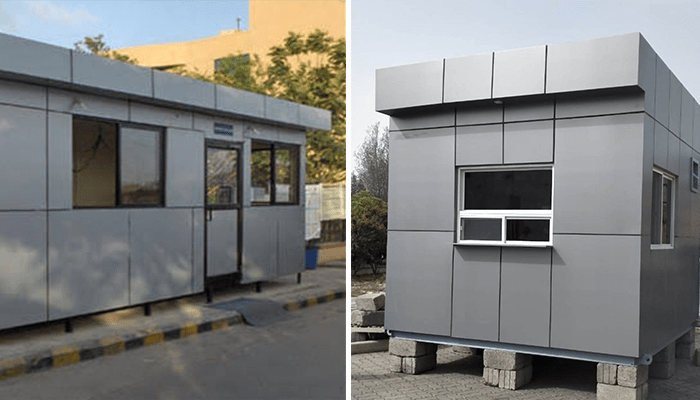ACP Cladding Cabins
ACP Cladding Cabins
Aluminum Composite Panels (ACP) are widely used in the construction of cladding cabins, offering a combination of aesthetic appeal and functional benefits. Here’s a detailed overview:
What is ACP Cladding?
ACP cladding involves the use of aluminum composite panels, which consist of two thin layers of aluminum enclosing a non-aluminum core. This core is typically made of materials such as polyethylene or mineral-filled core. ACPs are used to create a protective and decorative layer over the underlying structure of buildings.
Features of ACP Cladding

Durability: ACPs are known for their strength and resistance to weather, impact, and corrosion, making them suitable for various environmental conditions.
Lightweight: The panels are relatively light compared to other materials, which simplifies handling and installation.
Versatility: Available in a wide range of colors, textures, and finishes, ACPs can mimic other materials like wood or stone, offering a high level of design flexibility.
Low Maintenance: ACPs require minimal maintenance compared to traditional cladding materials. They are easy to clean and resist staining and fading.
Thermal Insulation: ACPs offer good thermal insulation, contributing to the energy efficiency of the building by reducing heat transfer.
Applications of ACP Cladding Cabins
Office Cabins: ACP cladding is often used for modular office cabins due to its modern appearance and ease of installation.
Portable Cabins: For temporary or portable structures, ACP provides a robust and attractive finish.
Guardhouses and Kiosks: ACP is ideal for small buildings like guardhouses and kiosks, combining functionality with aesthetic appeal.
Commercial and Retail Units: Many commercial spaces use ACP cladding for its sleek and professional look.
Installation Process
Preparation: Ensure the surface to which the ACP will be attached is clean, level, and dry.
Framework: Install a framework or substructure to which the ACP panels will be fixed. This can be made of metal or wood, depending on the project requirements.
Panel Attachment: Fix the ACP panels to the framework using screws, rivets, or adhesive. Panels should be aligned properly to ensure a seamless finish.
Sealing and Finishing: Seal any joints or edges to prevent water infiltration and complete the finishing touches for a polished look.
Maintenance and Care
Cleaning: Regularly clean the panels with a mild detergent and water to maintain their appearance. Avoid abrasive cleaners that could damage the surface.
Inspection: Periodically check for any damage or wear, especially around joints and edges, and address any issues promptly to ensure longevity.
Advantages
Aesthetic Appeal: ACP cladding provides a sleek, modern look that can enhance the visual appeal of various types of cabins.
Cost-Effective: While offering a premium appearance, ACPs are generally more affordable compared to other high-end materials.
Quick Installation: The lightweight nature of ACP panels allows for faster and easier installation, reducing overall project time.
In conclusion, ACP cladding cabins offer a blend of durability, aesthetic versatility, and low maintenance, making them a popular choice for various applications in modern construction. Whether for permanent or temporary structures, ACPs provide an attractive and practical solution for cladding needs.


